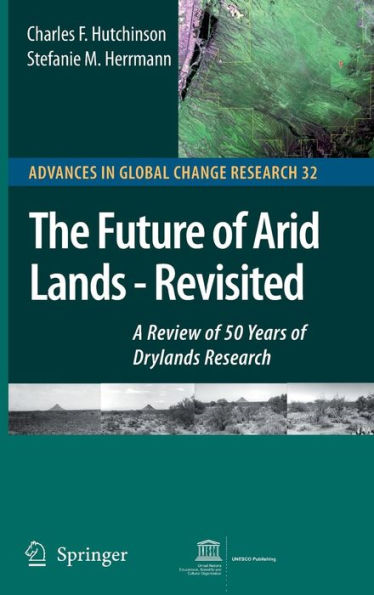The Future of Arid Lands-Revisited: A Review of 50 Years of Drylands Research
UNESCO commemorated its sixtieth anniversary in 2005. It was a year for refl- tion – a time to look back on the progress made and the achievements accomplished over the last 60 years. To celebrate the importance and relevance of science at UNESCO a publication entitled Sixty Years of Science at UNESCO: 1945–2005 was launched in 2006, which offers an insight into the organization’s commitment towards and endeavors in science from the past through to the present day. Within the United Nations System, UNESCO has one of the longest traditions in addressing dryland problems from a scientific point of view. As it happened, arid zones were precisely at the centre of UNESCO’s earliest efforts at international scientific collaboration in the study of natural resources. The first international research program dealing with these zones was launched back in 1951 under the direction of an International Advisory Committee. It was continued until 1964, after being raised to the status of a Major Project of the Organization in 1957. This Major Project was a pioneer program in many respects. One of its merits, and not the least, was that it blazed a trail in its interdisciplinary approach to the study of natural resources and its holistic view of the problems of arid and semiarid zones.
1111366358
The Future of Arid Lands-Revisited: A Review of 50 Years of Drylands Research
UNESCO commemorated its sixtieth anniversary in 2005. It was a year for refl- tion – a time to look back on the progress made and the achievements accomplished over the last 60 years. To celebrate the importance and relevance of science at UNESCO a publication entitled Sixty Years of Science at UNESCO: 1945–2005 was launched in 2006, which offers an insight into the organization’s commitment towards and endeavors in science from the past through to the present day. Within the United Nations System, UNESCO has one of the longest traditions in addressing dryland problems from a scientific point of view. As it happened, arid zones were precisely at the centre of UNESCO’s earliest efforts at international scientific collaboration in the study of natural resources. The first international research program dealing with these zones was launched back in 1951 under the direction of an International Advisory Committee. It was continued until 1964, after being raised to the status of a Major Project of the Organization in 1957. This Major Project was a pioneer program in many respects. One of its merits, and not the least, was that it blazed a trail in its interdisciplinary approach to the study of natural resources and its holistic view of the problems of arid and semiarid zones.
169.99
In Stock
5
1

The Future of Arid Lands-Revisited: A Review of 50 Years of Drylands Research
228
The Future of Arid Lands-Revisited: A Review of 50 Years of Drylands Research
228Hardcover(2008)
$169.99
169.99
In Stock

Product Details
| ISBN-13: | 9781402066887 |
|---|---|
| Publisher: | Springer Netherlands |
| Publication date: | 11/20/2007 |
| Series: | Advances in Global Change Research , #32 |
| Edition description: | 2008 |
| Pages: | 228 |
| Product dimensions: | 6.00(w) x 9.30(h) x 0.60(d) |
From the B&N Reads Blog
